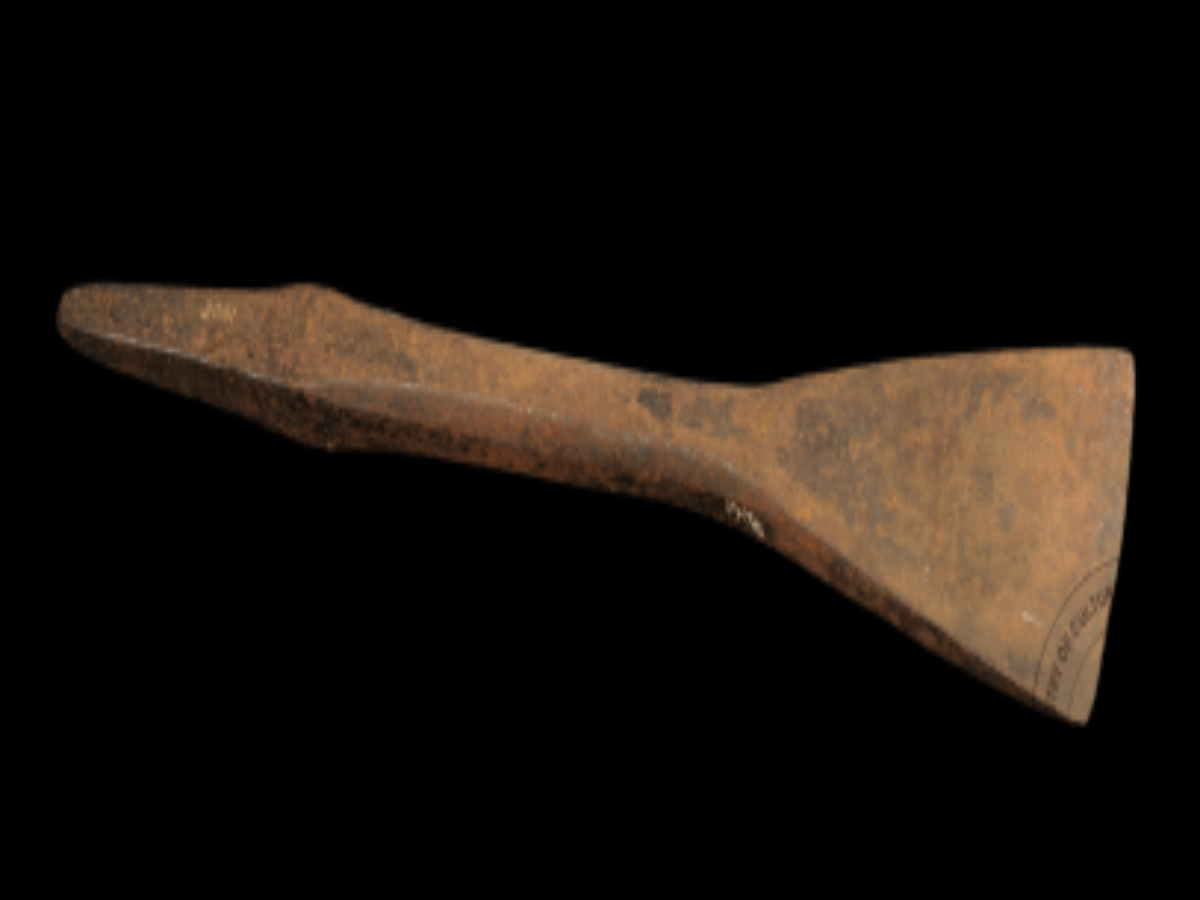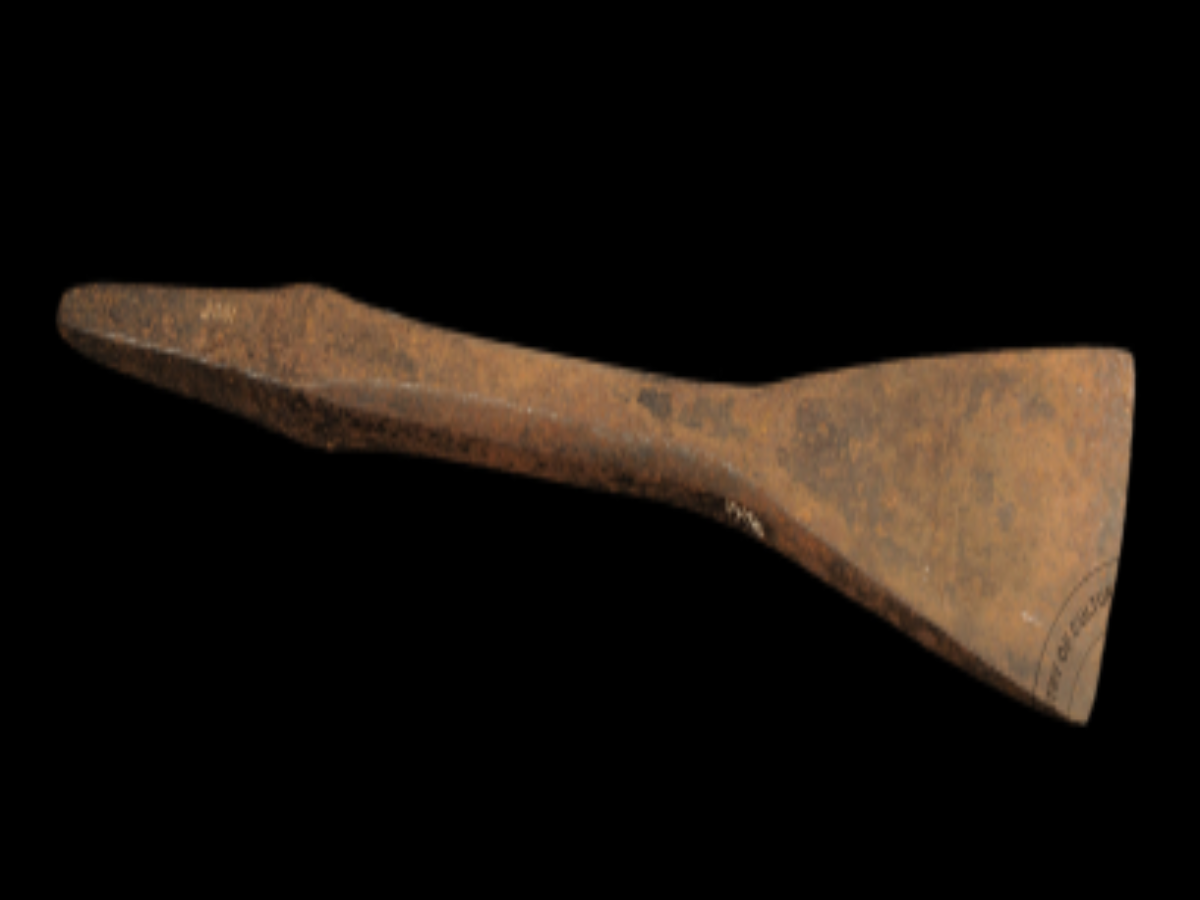State
Tribe Name
Art Type
short description
The U-Sydie is a conventional iron axe employed by the Khasi tribe of Meghalaya, representing the traditional knowledge in tool-making and forest-based livelihoods. This specimen, which is presently kept in the Indian Museum, Kolkata, has a broad, straight, and sharp cutting edge, enabling it to perform extremely taxing chores like chopping timber or clearing forest land. The blade is made of iron, and its long, pointed lower end seems to suggest that it was built either for firmly inserting the axe head into wooden handles or for balance regarding the practical application of the axe. Given its configuration, utility must be extensively attended to within the hilly, forest-cover topography of Meghalaya, where the Khasi have sequentially relied on tools like the U-Sydie for agricultural purposes, collection of firewood, and construction.
Thumbnail

Filter Postion
Left
Filter Background
Off
Theme
Filter Header Image

content
Image

description
The U-Sydie is a conventional iron axe employed by the Khasi tribe of Meghalaya, representing the traditional knowledge in tool-making and forest-based livelihoods. This specimen, which is presently kept in the Indian Museum, Kolkata, has a broad, straight, and sharp cutting edge, enabling it to perform extremely taxing chores like chopping timber or clearing forest land. The blade is made of iron, and its long, pointed lower end seems to suggest that it was built either for firmly inserting the axe head into wooden handles or for balance regarding the practical application of the axe. Given its configuration, utility must be extensively attended to within the hilly, forest-cover topography of Meghalaya, where the Khasi have sequentially relied on tools like the U-Sydie for agricultural purposes, collection of firewood, and construction.
The U-Sydie is also part of the cultural representation of the Khasi society: it is a symbol of self-sufficiency, strength, and deep-rooted interdependence of the community with the natural world. The artefact stands for the tribe's craftsmanship, sustainability, and ability to adapt to their ecosystem. These tools were once incorporated into many tribal households and now act as cultural artefacts to conserve the traditions of Meghalaya's indigenous populace by owing their preservation and documentation.
The U-Sydie is also part of the cultural representation of the Khasi society: it is a symbol of self-sufficiency, strength, and deep-rooted interdependence of the community with the natural world. The artefact stands for the tribe's craftsmanship, sustainability, and ability to adapt to their ecosystem. These tools were once incorporated into many tribal households and now act as cultural artefacts to conserve the traditions of Meghalaya's indigenous populace by owing their preservation and documentation.
Image Mode
landscape
promoted
On
Verified
Off
